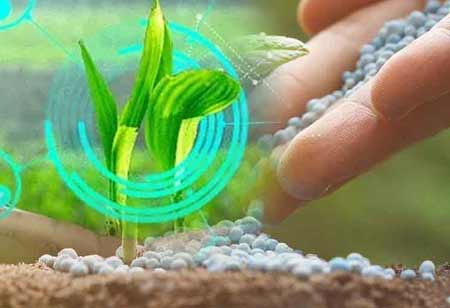Thank you for Subscribing to Agri Business Review Weekly Brief
Innovation And Technology In Agriculture To Watch Out For In 2022
With environmental changes hard to predict, we must turn to innovation in agriculture technology. Just explore technologies that change farmers' growth, transport, store, and manage production.

By
Agri Business Review | Tuesday, September 13, 2022
Stay ahead of the industry with exclusive feature stories on the top companies, expert insights and the latest news delivered straight to your inbox. Subscribe today.
Here are innovations and technology in agriculture to watch out for in 2022.
FREMONT, CA: With environmental changes hard to predict, we must turn to innovation in agriculture technology. Just explore technologies that change farmers' growth, transport, store, and manage production.
Here are innovations and technology in agriculture to watch out for in 2022.
1. BEE VECTORING TECHNOLOGIES
Honey bees are important to human survival, so there is growing innovation in agriculture equipment to help protect bees and optimize their pollination capabilities.
BVT employs commercially reared bees to deliver targeted crop controls through pollination, substituting chemical pesticides with an environmentally safe crop protection system.
The system doesn't need spraying water or the use of tractors. Alternatively, the scientifically designed bumblebee hive enables bees to pick up a trace amount of pest control powders on their legs to distribute as they travel within the field.
This technological innovation supports improved sustainable farming, crop yield, and soil quality. BVT's solution is befitting for many crops, comprising blueberries, sunflowers, apples, and tomatoes, and it also operates for farms of all sizes.
2. PRECISION AGRICULTURE
Precision agriculture is an agricultural resource management tactic that collects, processes, and evaluates data and offers insights to help farmers optimize and raise soil quality and productivity.
Management decisions rely on precision agriculture data points to enhance farmland and farm produce across several key areas, involving:
• Resource use efficiency
• Sustainability
• Profitability
•Productivity
• Quality
This innovation in agriculture technology employs big data to help management decisions, enabling farmers to control crop yield variables such as moisture level, soil condition, and microclimates to magnify output. It depends on remote sensing systems, drones, robotics, and automation to improve crop health and optimize agricultural resources, leading to more productivity.
3. INDOOR VERTICAL FARMING
The average return of rice per hectare is between three and six tonnes. Still, farmers don't have to face this limitation when employing indoor vertical farming. This
Indoor vertical farming raise farm produces stacked above one another in a closed & controlled environment.
The technology employs vertical growing shelves to increase crop yield in limited spaces. Pretty often, the shelves don't need soil—they're either hydroponic or aeroponic:
• Hydroponics is a gardening practice that cultivates plants in water and nutrient solutions.
• Aeroponics interrupt the roots of the crops in the air, with emitters erratically spraying them with water and nutrients.
Indoor vertical farms allow growers to control variables like light, temperature, water, and sometimes carbon dioxide levels, allowing them to get healthier, plus higher yields.
4. LIVESTOCK FARMING TECHNOLOGY
Emerging livestock technologies offer farmers data-driven insights, enabling them to streamline farm management, enhance animal care, and boost productivity.
Following are some of the many innovations redefining livestock farming:
• Automated dairy milk cows automatically without human intervention, and the milk sensors also help farmers monitor the milk quality.
• Automated cleaning systems remove waste, enabling cleaner and disease-free environments.
• Armenta's non-antibiotic treatment employs acoustic pulse technology (APT) for bovine mastitis, a cow disease responsible for over $6 billion in annual losses in the U.S. and Europe.
• Automated feeder systems give animals feeding mixtures customized to their specific requirements and in the right amount.
• Faromatics use robotics, A.I., and big data to increase animal welfare plus farm productivity.
5. LASER SCARECROWS
Pesky birds or rodents can threaten to cultivate crops in an open field. In the past, farmers depended on conventional scarecrows to ward off hungry invaders. But currently, farm owners and managers are turning to high-tech devices with motion sensors to keep birds from pillaging crops.
After finding that birds are sensitive to the colour green, a researcher from the University of Rhode Island helped design a laser scarecrow, which projects green laser light. The light isn't visible by humans in sunlight, but it can shoot 600 feet across a field to startle birds before destroying crops.
Early tests with laser scarecrows found that the devices can minimize crop damage by reducing the bird population around farmlands by up to 70% to 90%.





